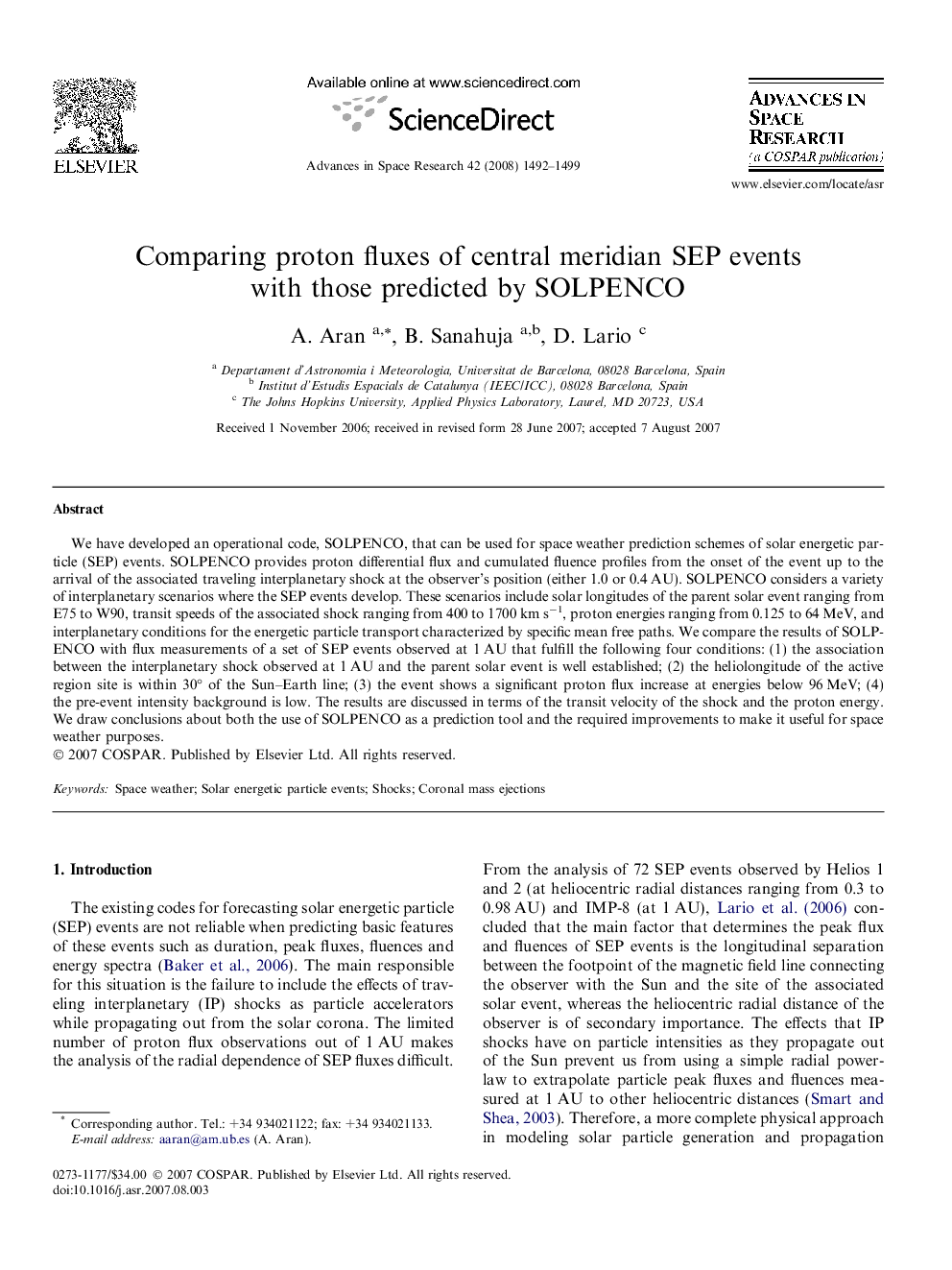| Article ID | Journal | Published Year | Pages | File Type |
|---|---|---|---|---|
| 1766025 | Advances in Space Research | 2008 | 8 Pages |
We have developed an operational code, SOLPENCO, that can be used for space weather prediction schemes of solar energetic particle (SEP) events. SOLPENCO provides proton differential flux and cumulated fluence profiles from the onset of the event up to the arrival of the associated traveling interplanetary shock at the observer’s position (either 1.0 or 0.4 AU). SOLPENCO considers a variety of interplanetary scenarios where the SEP events develop. These scenarios include solar longitudes of the parent solar event ranging from E75 to W90, transit speeds of the associated shock ranging from 400 to 1700 km s−1, proton energies ranging from 0.125 to 64 MeV, and interplanetary conditions for the energetic particle transport characterized by specific mean free paths. We compare the results of SOLPENCO with flux measurements of a set of SEP events observed at 1 AU that fulfill the following four conditions: (1) the association between the interplanetary shock observed at 1 AU and the parent solar event is well established; (2) the heliolongitude of the active region site is within 30° of the Sun–Earth line; (3) the event shows a significant proton flux increase at energies below 96 MeV; (4) the pre-event intensity background is low. The results are discussed in terms of the transit velocity of the shock and the proton energy. We draw conclusions about both the use of SOLPENCO as a prediction tool and the required improvements to make it useful for space weather purposes.
